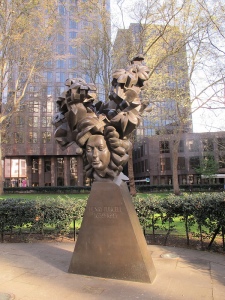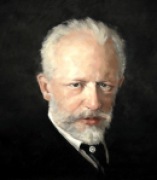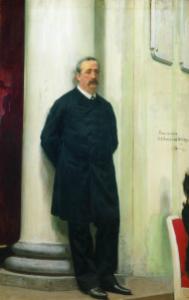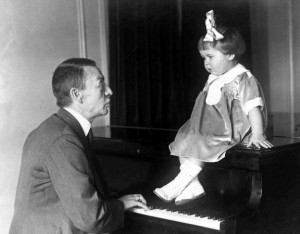 If you were wealthy enough to ‘own’ an instrumental ensemble, what would you choose? A string quartet or a jazz trio? How about a wind band or an early music group? My choice would be a brass quintet. As a teenage trumpeter, I loved playing in an unconducted small ensemble and dreamt of being the first (and only, ever) female member of the Philip Jones Brass Ensemble.
If you were wealthy enough to ‘own’ an instrumental ensemble, what would you choose? A string quartet or a jazz trio? How about a wind band or an early music group? My choice would be a brass quintet. As a teenage trumpeter, I loved playing in an unconducted small ensemble and dreamt of being the first (and only, ever) female member of the Philip Jones Brass Ensemble.
Wind ensembles, known as Harmonie, were very popular among the rich and royal of Wolfgang Amadeus Mozart’s time (Mozart, 1756-1791). Emperor Franz Joseph II had such a group. Prince Liechtenstein asked Mozart to both find him a group of wind and brass musicians and to compose new pieces for them to play. The groups performed at social occasions, indoor and outdoor, and sometimes played for more formal events. The music for such ensembles, known as harmoniemusik, was meant to entertain, it was often light in nature and unmemorable. The serenade was a popular musical form. Mozart elevated it into compositions that have endured. A minor key was an unusual choice and suggests K388 was written for a more formal or civic occasion.
The third programme item in the East of England Singers’ concert on Saturday 17 October, St John’s Church, Carrington, Nottingham, 7.30pm will be Mozart’s Serenade in C Minor for Wind Octet, K388, played by the New Classical Wind Ensemble. It is scored for 2 oboes, 2 clarinets, 2 horns and 2 bassoons.
So why Mozart the Recycler? Some years later, Mozart would transcribe the work for string quintet, keeping the same key signature, C minor.
Click here for the full concert programme and tickets.
Here is the second movement of Mozart’s Serenade in C minor, K388
If you receive the blog post by email, you might have to click through to the website to listen to the music.


 Purcell was the organist at Westminster Abbey at the time of the death of Queen Mary II in 1694. Although the Queen had requested that there be no state occasion upon her death, the outpouring of national grief led to a state funeral that cost, in the value of the time, £100,000. It took place on 5 March 1695. Purcell was responsible for the music. Scholarship now shows that although some of the music used during the service was by Purcell himself, much was by Morley and others. It is known that Purcell’s third version of Thou knowest, Lord, the secrets of our hearts, and his March and Canzona, were used during the service. His two other funeral sentences, which will also be sung during the concert, come from c1682, before Mary came to the throne. They were perhaps written for the funeral service of a friend. The third version of Thou knowest, Lord, has been used at many subsequent royal funerals, including that of Queen Elizabeth, the Queen Mother.
Purcell was the organist at Westminster Abbey at the time of the death of Queen Mary II in 1694. Although the Queen had requested that there be no state occasion upon her death, the outpouring of national grief led to a state funeral that cost, in the value of the time, £100,000. It took place on 5 March 1695. Purcell was responsible for the music. Scholarship now shows that although some of the music used during the service was by Purcell himself, much was by Morley and others. It is known that Purcell’s third version of Thou knowest, Lord, the secrets of our hearts, and his March and Canzona, were used during the service. His two other funeral sentences, which will also be sung during the concert, come from c1682, before Mary came to the throne. They were perhaps written for the funeral service of a friend. The third version of Thou knowest, Lord, has been used at many subsequent royal funerals, including that of Queen Elizabeth, the Queen Mother.

 It was good to have time to look at the pieces in depth and learn some singing techniques. Angela and Alex talked about the importance of supporting the breath with those abdominal muscles. (Did anyone see Strictly? Weren’t there some abs on view!) We considered the importance of posture, and how to lift the sounds of our voices from strangled-cat in the throat to beautiful and resonating in the mouth.
It was good to have time to look at the pieces in depth and learn some singing techniques. Angela and Alex talked about the importance of supporting the breath with those abdominal muscles. (Did anyone see Strictly? Weren’t there some abs on view!) We considered the importance of posture, and how to lift the sounds of our voices from strangled-cat in the throat to beautiful and resonating in the mouth.
 violin and piano, six symphonies and other orchestral works. He wrote songs, instrumental music and opera, the best known of which is Eugene Onegin. He was a troubled man from a young age until his death. Whether he died from natural causes or suicide remains a point of conjecture. He wrote music of passion and deep emotion, but by no means all melancholic. Music, it’s good for the soul.
violin and piano, six symphonies and other orchestral works. He wrote songs, instrumental music and opera, the best known of which is Eugene Onegin. He was a troubled man from a young age until his death. Whether he died from natural causes or suicide remains a point of conjecture. He wrote music of passion and deep emotion, but by no means all melancholic. Music, it’s good for the soul. ‘Glazunov … was to fill in all the gaps in Act III and write down from memory the Overture played so often by the composer, while I was to orchestrate, finish composing, and systematise all the rest that had been left …’ (from Rimsky-Korskov’s Chronicle of My Musical Life, 1909)
‘Glazunov … was to fill in all the gaps in Act III and write down from memory the Overture played so often by the composer, while I was to orchestrate, finish composing, and systematise all the rest that had been left …’ (from Rimsky-Korskov’s Chronicle of My Musical Life, 1909)
